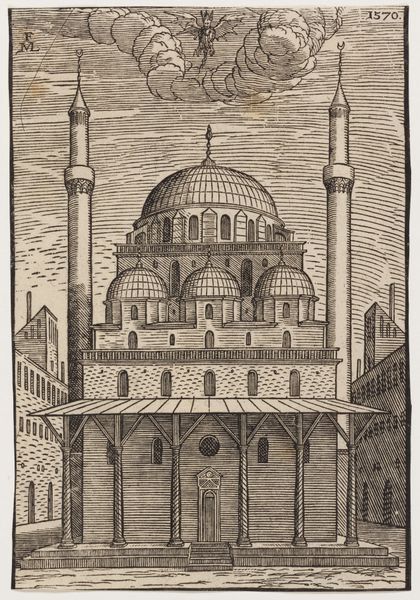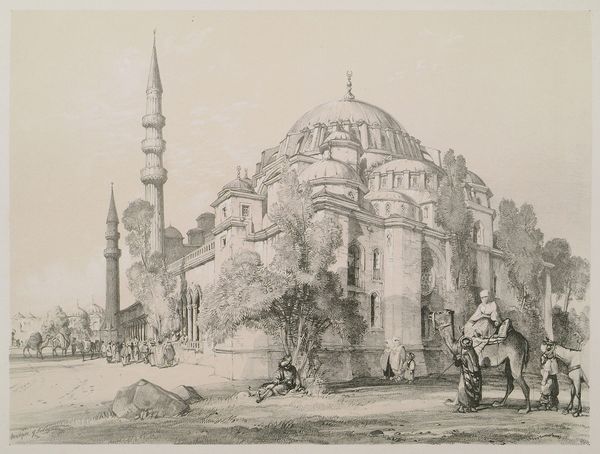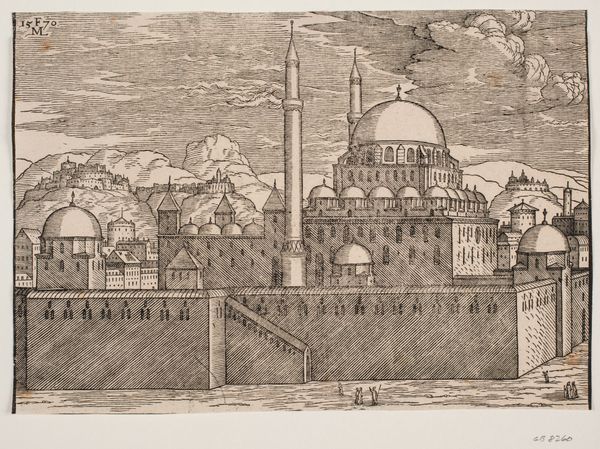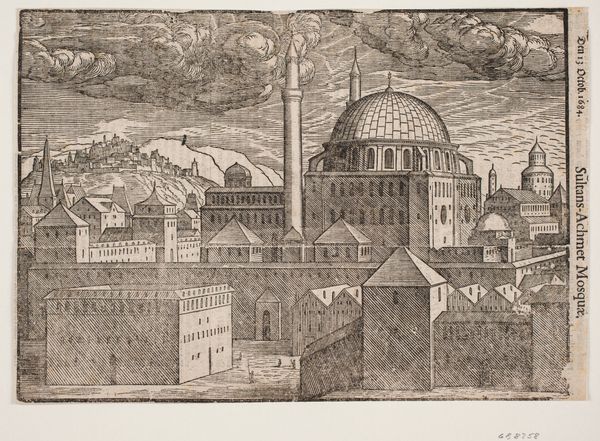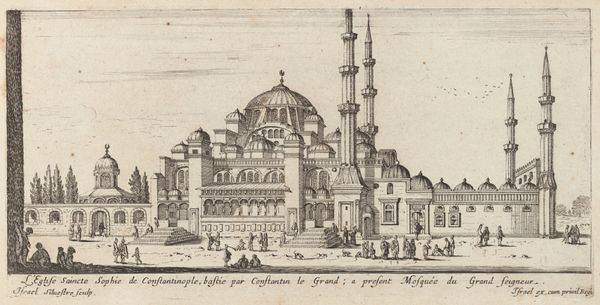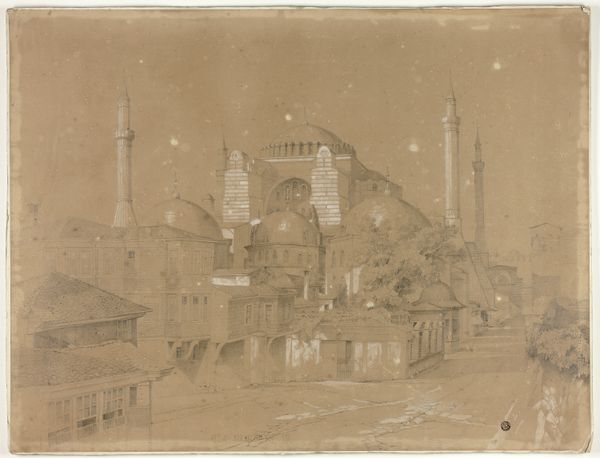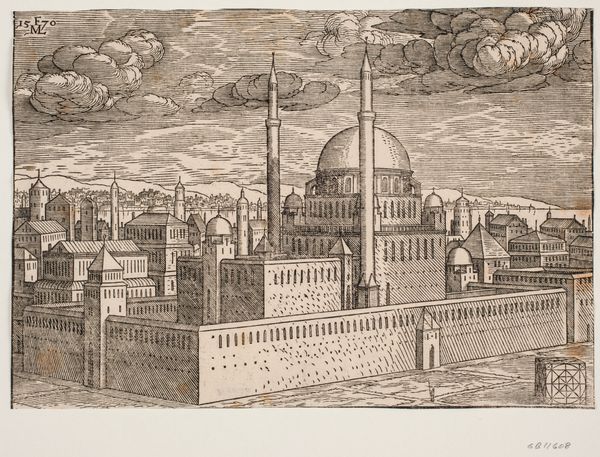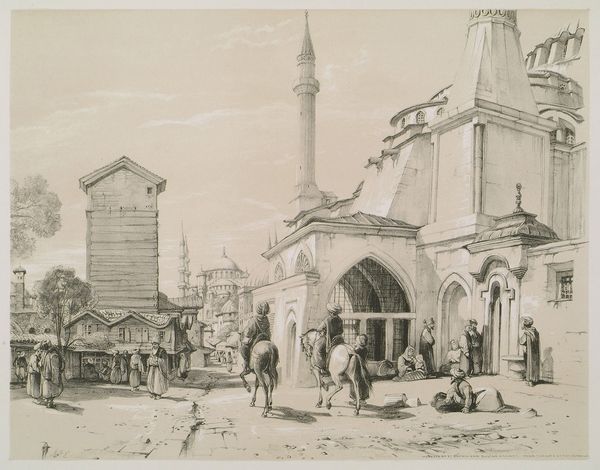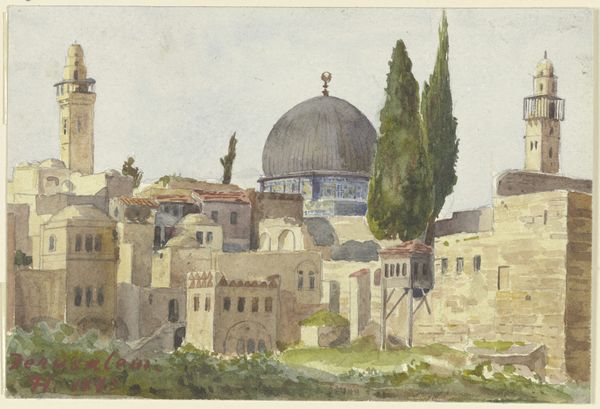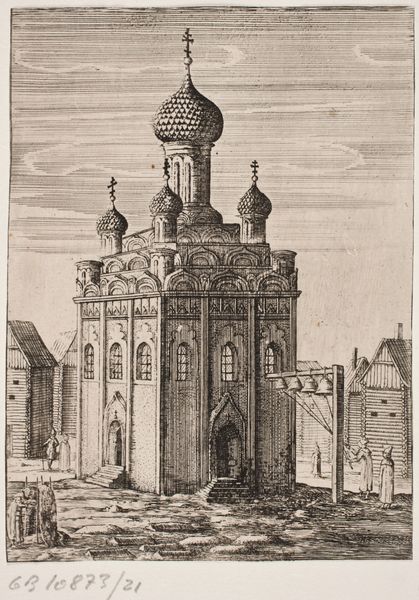
print, woodcut, architecture
# print
#
woodcut
#
line
#
cityscape
#
islamic-art
#
architecture
Dimensions: 179 mm (height) x 206 mm (width) (bladmaal)
Curator: Let’s discuss this arresting woodcut by Melchior Lorck, titled "The Atik Ali Pasha Mosque at Istanbul," created in 1576. Editor: My first impression is of striking stillness, even severity. The precise lines capture the architecture meticulously, but there’s a somewhat austere feeling overall. Is it just the black and white or something else? Curator: It’s partly the medium. Woodcut prints rely on stark contrasts. Lorck’s genius here lies in how he modulates light and shadow using line density. Notice how he articulates the domes and minaret. This approach really emphasizes the monumentality of the mosque. Editor: I see it. And the repetition of geometric forms - domes echoing domes - evokes a sense of the infinite, of spiritual depth. I'm wondering, does the cityscape context play into that feeling as well? Were mosques perceived differently depending on the cityscape surrounding them? Curator: Intriguing idea! Consider that Lorck, as a European artist in Istanbul, was encountering a culture with powerful symbols that differed from those he knew. So here is this representation. We can infer he emphasizes the ordered harmony of Islamic architecture – domes and minarets creating a sacred landscape distinct from the mundane world. Editor: You know, it does seem significant that Lorck focuses on this rather particular structure in Istanbul; one dedicated to Ali Pasha. I'm curious as to what this might reflect about their society at that time; do the arches signify triumph and are there repeated appeals to that sentiment for a society during this period of time? Curator: Well, we can suppose these repeating architectural forms may underscore their permanence and centrality within Ottoman society. And note the line quality—it seems to mimic stone laying practices and in many respects suggests steadfast building principles of Istanbul. The line work suggests the permanence intended to be represented. Editor: In viewing such geometric images and precise renderings one does begin to question these architectural details. How they come about and where they lead! The artist seems successful in expressing them. Curator: Precisely! By reducing the world to fundamental forms, the artwork allows us to look anew at their power. Editor: Ultimately, it's about contemplating that meeting point of visual culture and historic sentiment and how those impact viewers over time. Curator: I concur! And here it's that unique combination of western hand and interpretation that offers lasting value in viewing this impressive work.
Comments
No comments
Be the first to comment and join the conversation on the ultimate creative platform.
